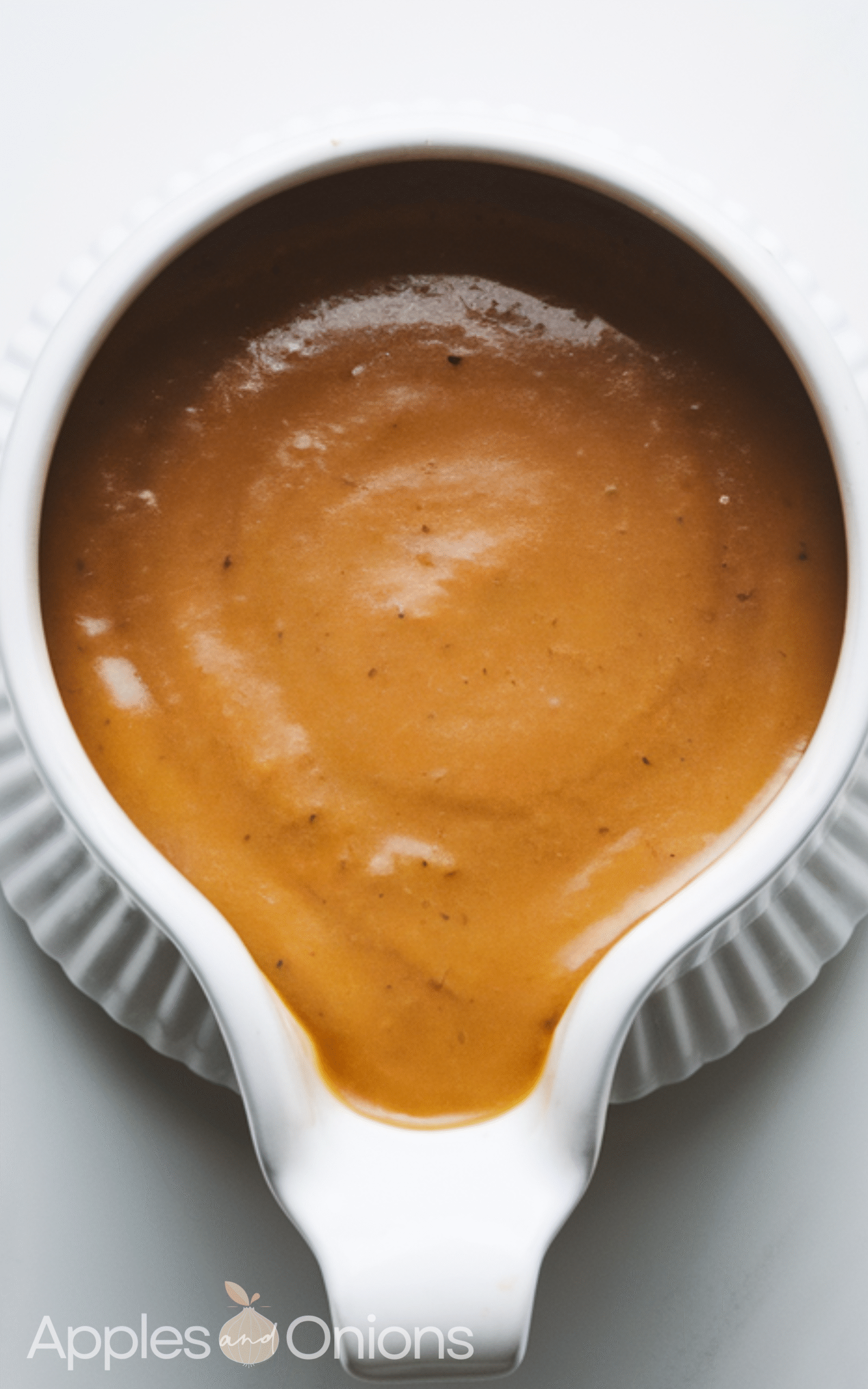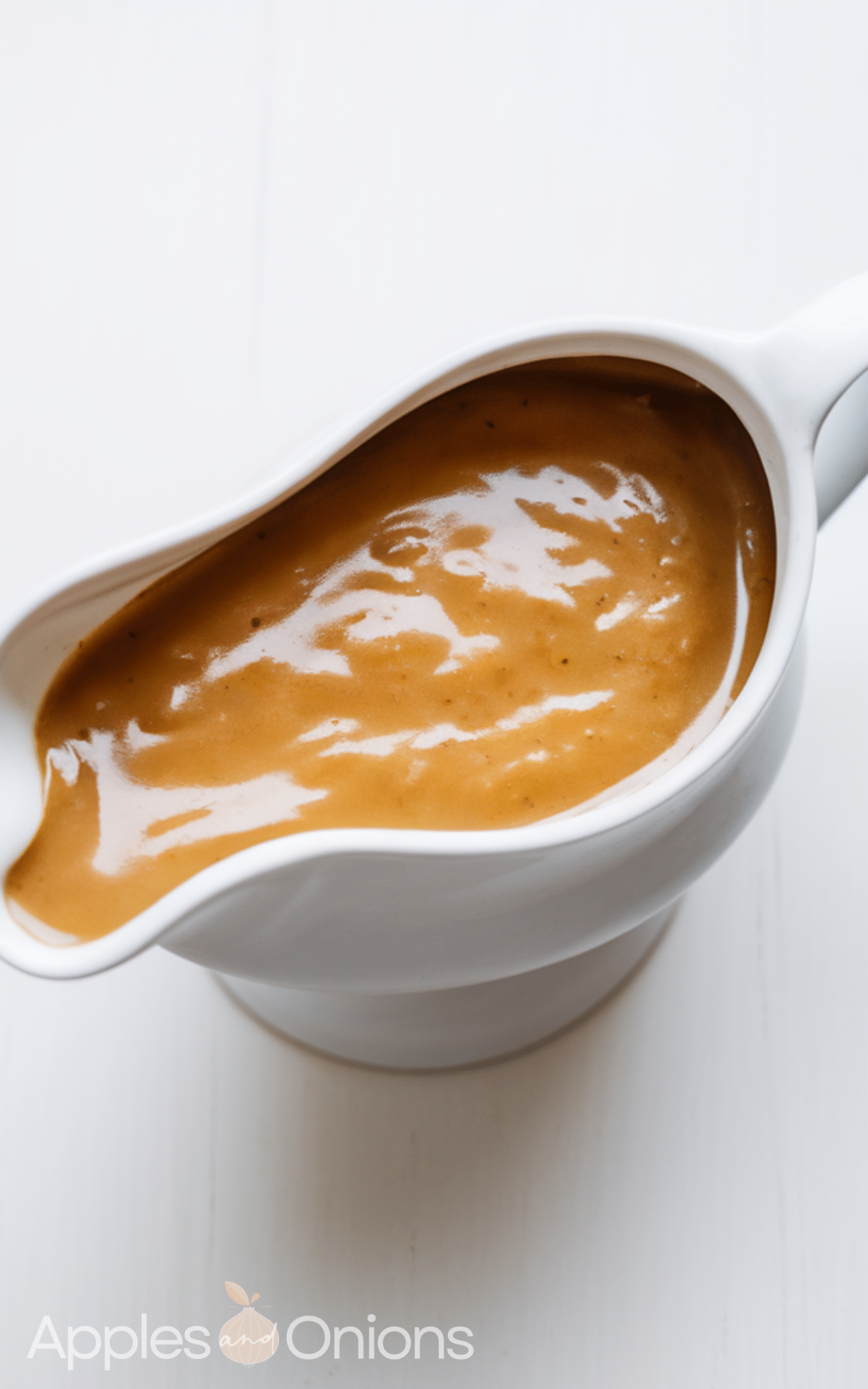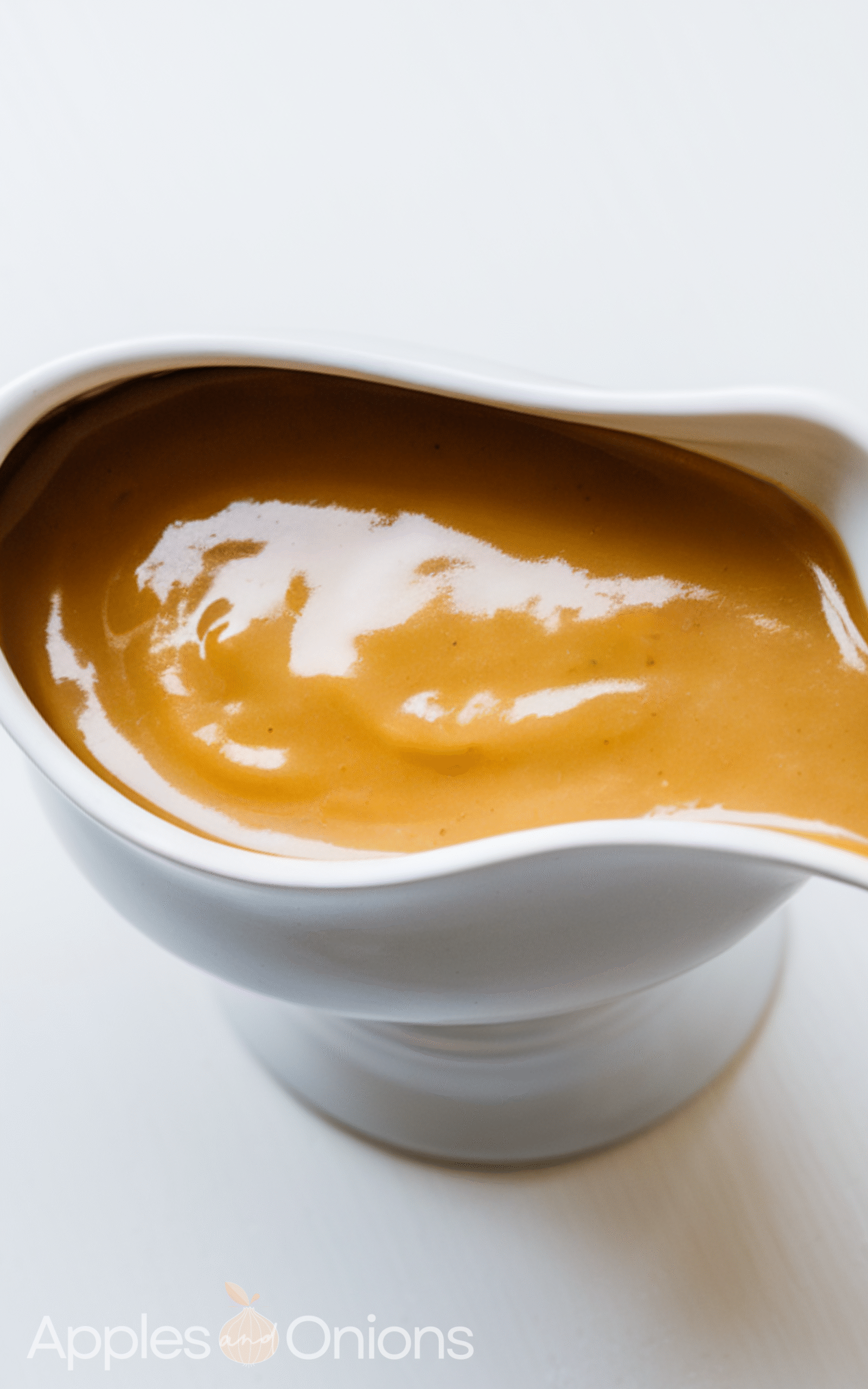You know how sometimes recipes don’t go as planned and well that was me with this one, because the first time I tried Turkey Gravy I burnt it so typical me and yet I laughed because food is forgiving and it gives us second chances.

When I finally got Turkey Gravy right it felt like magic because the taste was rich and cozy and it reminded me of family dinners so I thought hey this could actually work and now I can’t imagine turkey without it.
Have you ever tried making Turkey Gravy on your own because if not you’re totally in the right place and trust me if I can fix my mistakes and make it taste this good, then you can too and maybe even better.
ingredients
- 2 cups turkey drippings or pan juices
- 2 cups chicken or turkey stock
- 1/4 cup all-purpose flour
- 1/4 cup butter
- 1/2 teaspoon salt (or to taste)
- 1/4 teaspoon black pepper (or to taste)
- Optional: 1/4 teaspoon dried thyme or sage for extra flavor
ingredients notes
- Turkey drippings are the juices that come from roasting the turkey and they give the gravy its best flavor.
- Chicken or turkey stock adds more liquid and depth.
- Flour helps thicken the gravy so it’s smooth and not runny.
- Butter adds richness and creaminess that kids and adults both enjoy.
- Herbs like thyme or sage are optional but make the gravy taste extra special.

How to make Turkey Gravy?
step 1: gather your ingredients
Before you start cooking, put all your ingredients on the counter so everything is ready and easy to reach. This makes cooking less stressful and more fun.
step 2: melt the butter
In a medium saucepan over medium heat, melt the butter until it’s bubbly and golden. Be careful not to let it burn because burnt butter can make the gravy taste bitter.
step 3: make a roux
Sprinkle the flour into the melted butter slowly while stirring constantly with a whisk or spoon. Keep stirring for about 2–3 minutes until the mixture is smooth and smells a little nutty. This mixture is called a roux and it will thicken your gravy.
step 4: add the stock
Gradually pour in the turkey or chicken stock while whisking quickly to avoid lumps. Keep stirring until the mixture is smooth and starts to thicken.
step 5: add the drippings
Pour in the turkey drippings slowly while continuing to stir. The drippings are what give the gravy its rich turkey flavor.
step 6: season the gravy
Add salt, pepper, and optional herbs like thyme or sage. Taste the gravy and adjust the seasoning if needed. You can always add a little more salt or pepper but be careful not to overdo it.
step 7: simmer and stir
Lower the heat and let the gravy simmer gently for 5–10 minutes. Stir often so it doesn’t stick to the bottom of the pan. The longer it simmers, the more the flavors come together.
step 8: serve and enjoy
Once the gravy is thick and smooth, pour it over turkey, mashed potatoes, stuffing, or whatever you like. Serve warm and watch how everyone enjoys the rich, savory flavor.

kitchen equipment needed
- Medium saucepan
- Whisk or wooden spoon
- Measuring cups and spoons
- Ladle for serving
- Stove
storage options!
Turkey gravy can be stored in the refrigerator in an airtight container for up to 4 days. When reheating, warm it slowly on the stove while stirring to prevent it from separating. You can also freeze it for up to 3 months in a freezer-safe container. To thaw, leave it in the fridge overnight and reheat gently on the stove.
variations!
You can make turkey gravy in different ways to match your taste or what’s in your kitchen. Use cream instead of some stock for a richer gravy or add a splash of white wine for extra flavor. For a thicker gravy, add a little more flour when making the roux. For a thinner gravy, add a little more stock. You can also experiment with different herbs like rosemary or parsley to change the flavor slightly. Kids usually like it simple, but adults might enjoy these small variations for special occasions.
what to enjoy with turkey gravy?
Turkey Gravy is one of those recipes that makes almost anything on the plate taste better because you can pour it over juicy roast turkey for the classic combo. You can spoon it onto fluffy mashed potatoes so every bite feels cozy and you can drizzle it over stuffing to make it even richer. You can dip warm bread rolls right into it like a little snack.
you can ladle some onto roasted veggies like carrots or green beans to give them extra flavor and you can even stir a little into rice or noodles when you want something simple yet comforting.
you can save a bit for the next day to make leftover turkey sandwiches taste amazing and honestly I love enjoying all of this with a glass of my Autumn Harvest Punch Recipe because the sweet and refreshing drink balances out the warm and savory gravy perfectly.
tips for making the best turkey gravy
- Always use good quality turkey drippings because they are the main flavor of the gravy.
- Stir constantly when adding flour and stock to prevent lumps.
- Start with a small amount of seasoning and taste as you go.
- Use a whisk to make the gravy smooth and creamy.
- Simmer gently; high heat can make the gravy separate.
- If the gravy is too thick, add a little more stock to thin it out.
- For extra flavor, add herbs like thyme, sage, or a little rosemary.
- Keep stirring until you serve so the texture stays smooth and rich.
FAQ
what is turkey gravy made of?
It’s made of turkey drippings, stock, butter, flour, and seasonings like salt and pepper. Optional herbs add extra flavor.
what does turkey gravy taste like?
It tastes savory, rich, and warm with a smooth, slightly creamy texture and a hint of herbs if you add them.
can I make turkey gravy without drippings?
Yes, you can use all stock or broth, but the flavor will be slightly less rich.
how long does it take to make?
About 20 minutes from start to finish.
can I make turkey gravy ahead of time?
Yes, you can make it a day before and reheat gently on the stove.
can I freeze turkey gravy?
Yes, freeze in a freezer-safe container for up to 3 months.
how do I thicken turkey gravy?
Make a roux with butter and flour or add a slurry of flour and water while simmering.
can I make turkey gravy gluten-free?
Yes, use cornstarch or a gluten-free flour instead of all-purpose flour.
can kids help make turkey gravy?
Absolutely, kids can whisk the mixture or pour stock slowly with supervision.
what can I add for extra flavor?
Herbs like thyme, sage, or rosemary and a splash of cream or white wine can enhance the taste.
what dishes go best with turkey gravy?
Mashed potatoes, roasted vegetables, stuffing, turkey, meatloaf, and rice are perfect with it.
what’s the best way to reheat turkey gravy?
Warm it slowly on the stove while stirring to keep it smooth and prevent separation.
Easy Make Ahead Turkey Gravy
Course: SidesCuisine: AmericanDifficulty: Easy6
servings5
minutes15
minutes90
kcal20
minutesA smooth and savory homemade Turkey Gravy made with turkey drippings, butter, and broth that’s quick, comforting, and perfect for pairing with turkey, mashed potatoes, and all your holiday favorites.
Ingredients
2 cups turkey drippings or pan juices
2 cups chicken or turkey stock
1/4 cup all-purpose flour
1/4 cup butter
1/2 teaspoon salt (or to taste)
1/4 teaspoon black pepper (or to taste)
Optional: 1/4 teaspoon dried thyme or sage for extra flavor
Directions
- Before you start cooking, put all your ingredients on the counter so everything is ready and easy to reach. This makes cooking less stressful and more fun.
- In a medium saucepan over medium heat, melt the butter until it’s bubbly and golden. Be careful not to let it burn because burnt butter can make the gravy taste bitter.
- Sprinkle the flour into the melted butter slowly while stirring constantly with a whisk or spoon. Keep stirring for about 2–3 minutes until the mixture is smooth and smells a little nutty. This mixture is called a roux and it will thicken your gravy.
- Gradually pour in the turkey or chicken stock while whisking quickly to avoid lumps. Keep stirring until the mixture is smooth and starts to thicken.
- Pour in the turkey drippings slowly while continuing to stir. The drippings are what give the gravy its rich turkey flavor.
- Add salt, pepper, and optional herbs like thyme or sage. Taste the gravy and adjust the seasoning if needed. You can always add a little more salt or pepper but be careful not to overdo it.
- Lower the heat and let the gravy simmer gently for 5–10 minutes. Stir often so it doesn’t stick to the bottom of the pan. The longer it simmers, the more the flavors come together.
- Once the gravy is thick and smooth, pour it over turkey, mashed potatoes, stuffing, or whatever you like. Serve warm and watch how everyone enjoys the rich, savory flavor.

